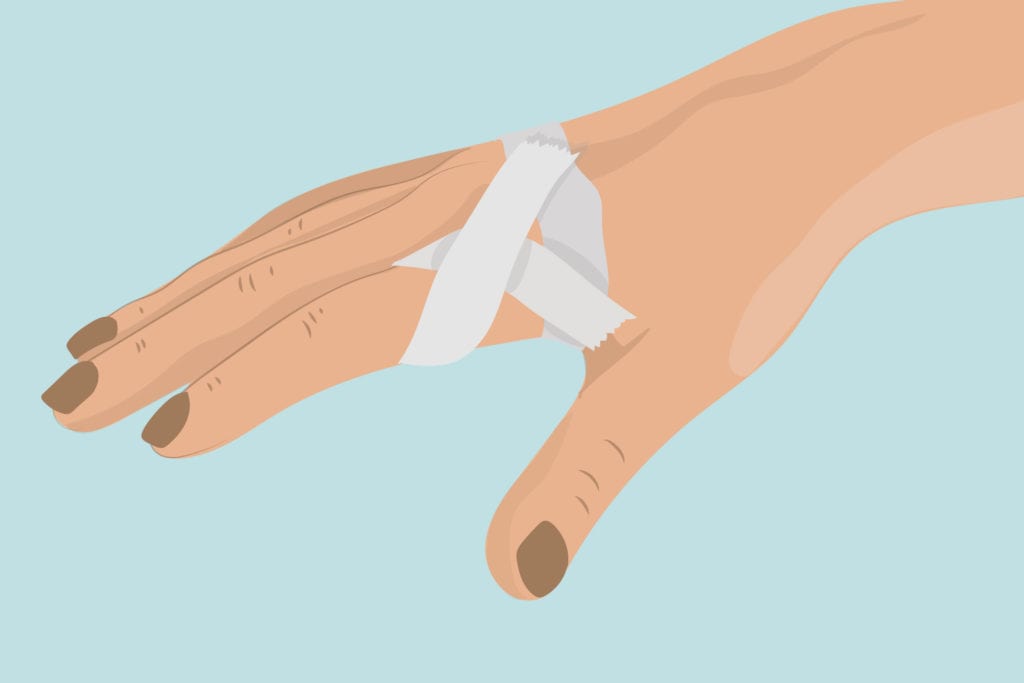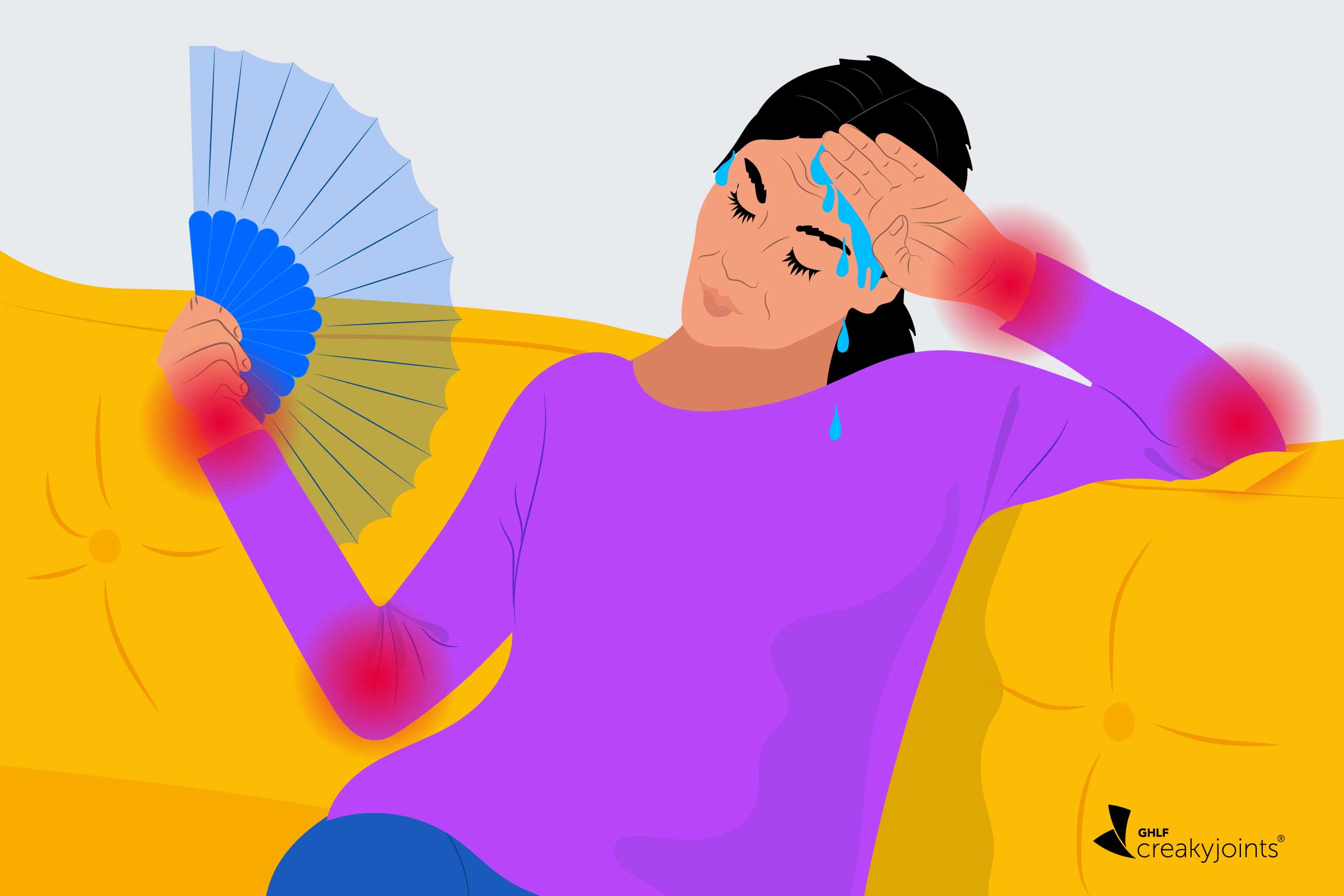

You use your hands for so many things during the day that if you were to look at a highlight reel, you might be shocked at how many hours your hands are on duty. And it’s not even the obvious things, like lifting heavy objects, that are the biggest offenders for arthritis hand pain in your fingers and wrists.
“Tasks that require gripping, such as opening jars, turning door knobs, cutting food, and lifting bags often can overstress the small joints of the hand and wrist, causing pain,” says Carole Dodge, OTR, CHT, a certified hand therapist who specializes in arthritis and rheumatology at University of Michigan Health System Occupational Therapy. “And when you have pain, you start avoiding certain activities, which can lead to weakness.” This can create a vicious cycle that leads to further hand pain and weakness.
But you can cut down on joint pain and strain in your hands by making simple adjustments to how you perform everyday tasks — hanging a washcloth to dry instead of wringing it out, or carrying a purse over your shoulder instead of on your wrist. Each time you make these kinds of adjustments you create everyday habits that become natural — and pay off for your future.
“These tips help people continue to perform tasks while preventing further stress on the involved/inflamed joints that may lead to potential deformity,” says Dodge. “This is important for people with active hand arthritis.”
We talked to occupational therapists and people living with arthritis for their best tips to minimize or prevent hand pain in their daily activities.
Memorize This Principle for Managing Arthritis Hand Pain
Forget for a second about the latest assistive gadgets and gizmos. It’s important to understand the general principles of how to protect your joints on a daily basis. Ask yourself these two questions, says Cheryl Crow, MOT, OTR/L, an occupational therapist specializing in arthritis at the Occupational Therapy Assistant program at Lake Washington Institute of Technology:
- “Can I change the stuff I’m using?” Can you alter the components of an activity to bypass challenging parts of a task altogether or make it easier in any way?
- “For example, if I use my local grocery store’s grocery delivery service, I can save myself from lifting and carrying,” says Crow, who has rheumatoid arthritis herself. You might think that sounds a bit indulgent, but let’s say you shopped for 20 items. Between handling the item in the store, the checkout aisle, your car, and your home, you could end up lifting and carrying each item at least five times — or 100 times for everything you purchased. No wonder grocery shopping is exhausting.
- “Can I change how I’m interacting with stuff?” Using the grocery store as an example, maybe you could hold a jar of pasta sauce in the crook of your elbow to bypass your hand joints rather than holding it with your thumb and fingers, suggests Crow. Or “hug” a grocery bag to your body using your upper arms and elbows so you can spare your hands. If you make it a habit to ask yourself this question on a daily basis, you can start to reduce unnecessary pain and strain on the joints in your hands.
Tips to Reduce Arthritis Hand Pain
1. Use Wide-Handled Utensils
You won’t catch Cheryl Ackerman, a certified aerial yoga instructor in Florida, eating without her wider-handled utensils. “It’s easier to grip without squeezing so tight,” she says. Protecting her joints is critical because aerial yoga (a type of yoga that uses a hammock) gives her significant relief for the stress, fatigue, and pain of rheumatoid arthritis and she can’t imagine not being able to do it.
“Increasing the size of the things we grab daily can help avoid excess strain on the hand joints,” says Crow. To enlarge the diameter of items you regularly use, buy wide-handled items or wrap the items in soft self-adherent tape. Check out these popular assistive devices on amazon.
2. Use Your Largest Joints and Strongest Muscles Instead of Your Fingers
It may take a while to make this a habit, because you’ve been using your fingers to hold a purse or to close a door most of your life. But put on your occupational therapist hat and think about how you can interact with your daily environment while protecting your joints. Crow advises patients (and tries to heed her own advice) to hold things closer to the core and as far away from the fingers as possible to avoid extra pressure in the finger joints. Always use the largest joints and strongest muscles instead of your fingers, when you can. When you interact with a door, use your hip to close it instead of your hand.
3. Make Typing Less of a Chore
If you work in an office setting where you’re on a computer all day, it can put a real strain on your fingers and wrists. Use an ergonomic keyboard and mouse. Or try dictation software for your computer and phone to type less in the first place.
4. Consider Kinetic Tape
Kate Mitchell of Massachusetts has made it a habit of carrying kinetic tape in her bag. She uses the tape proactively to protect her joints and keep pain at bay during the times when she can’t take her arthritis medicine. For example, she’ll tape proactively a troublesome knuckle in order to get through the day. “If I were to wait until after the pain got too high, the tape would help a little, but not a lot,” Mitchell says. Be prepared for the unexpected by getting into the habit of stashing tools like kinetic tape, splints, or compression gloves in your go-to bag.
5. Learn New Cooking Skills
Whether you love to cook or not, chances are you at least stir sauce or chop veggies from time to time. Even these sous chef efforts benefit from joint protection to prevent arthritis hand pain. For example, instead of stirring the sauce with your thumb and finger wrapped around the handle, hold your thumb on top of the utensil — like you were holding an ice pick and stabbing ice — and stir using shoulder motion. This method takes pressure off the joints and utilizes your shoulder to stir the sauce. Dodge suggests using kitchen tools with large handles and electric appliances, such as a can and jar openers and food processors. Check out more kitchen hacks for easier meal prep.
6. Become a Palm Reader
When you read from an electronic device like your phone, iPad, or Kindle, use the palm of your hands to hold it. You can use your palms in other ways too, which helps take pressure off your finger joints. Transport small items in the palm of your hand instead of gripping them. When you get up from a chair, use your palms to push off instead of your fingers.
7. Wear a Brace or Splint
This can be cumbersome when you’re going about your day, but the support and pain relief it brings can be significant for some people. But a brace or splint is not useful is the fit is off or if it’s not the right type for your specific needs. “I usually recommend neoprene orthosis (soft orthosis) for daytime to support a wrist or thumb, and if needed thermoplastic (custom orthosis), which are rigid and meant to limit motion at night if pain interferes with sleep,” says Dodge. Be sure to check in with your occupational therapist before ordering one on your own.
8. Divide and Conquer
Some activities are more harmful and painful on our joints than others, so it’s important to think about the day ahead and plan accordingly. To do this, Crow divides up her activities into two categories — ones that are small, lightweight, frequent actions (like making crafts)and large, heavy infrequent actions (like carrying a heavy laundry basket). Let’s say you’re going to spend a couple of hours crafting, using scissors, glue guns, etc. When dinner rolls around, plan for an easy-to-prep meal or get takeout. Planning enables you to enjoy the activities you love with less pain than if you were to go all-in the whole day.
9. Dip Into Soothing Relief
As kids, we all dreaded washing dishes but when arthritis leaves your hands stiff and tired, plunging them into the warm water is no longer a chore — it’s instant relief. But washing and scrubbing dishes may get painful. But there is another way to get that warm, soothing relief without working quite so hard for it: paraffin wax treatments. Occupational therapists use them to soothe stiff joints. Kerrie Kratzman did a paraffin treatment with her physiotherapist to help with her swan neck deformity, in which the middle joint of your fingers is bent back more than normal. “I thought I had gone to heaven; it felt so good,” says Kratzman, of Australia. You can get a paraffin bath at home and take advantage of soothing relief anytime. Just check with your occupational therapist first for specific at-home instructions.
10. Keep Up with Daily Hand Exercises
Kratzman wax treatments worked so well they enabled her to do a series of hand exercises from her physiotherapist five times a day. “My hands have improved immensely,” she says. “My hands felt stronger and I noticed I wasn’t dropping as many dishes, could do housework easier, and other things like getting dressed and brushing my teeth and hair were all easier,” says Kratzman. If you haven’t yet seen an occupational therapist, ask your doctor about a referral. You can also check out these hand exercises, though it’s best to follow a specific routine from an expert who can tailor to your specific needs.





